
UPCOMING EVENTS: SGMA Land Repurposing Program workshops; Fortifying water resilience; Sensitivity analysis to guide future data acquisition
Multibenefit Land Repurposing Program Stakeholder Workshops
 The Department of Conservation will hold two workshops to hear what stakeholders would like to see in their upcoming Multi-benefit Land Repurposing Program. These workshops are designed to give stakeholders the opportunity to provide input into the Department of Conservation’s proposed Multi-benefit Land Repurposing Program before program guidelines are developed.
The Department of Conservation will hold two workshops to hear what stakeholders would like to see in their upcoming Multi-benefit Land Repurposing Program. These workshops are designed to give stakeholders the opportunity to provide input into the Department of Conservation’s proposed Multi-benefit Land Repurposing Program before program guidelines are developed.
Everyone is encouraged to attend all or a portion of a workshop, as time allows. A brief overview of proposed program components will be provided at the top of each hour during each workshop, with the remainder of the time available for discussion and questions.
WORKSHOP #1: November 30, 10am – 12pm. Click here to register.
WORKSHOP #2: December 2, 5pm to 7pm. Click here to register.
Water in a Warming World – Fortifying California’s Water Resilience
 As climate change brings more extreme and variable weather, now is the time to work together to boost California’s water resilience. As we plan ahead for the next wet year, we must think holistically so we can replenish our aquifers – which provide 85% of Californians with a portion of their water supply – while being protective of water quality, providing healthy wildlife habitat, and ensuring our downstream communities are safe from flooding.
As climate change brings more extreme and variable weather, now is the time to work together to boost California’s water resilience. As we plan ahead for the next wet year, we must think holistically so we can replenish our aquifers – which provide 85% of Californians with a portion of their water supply – while being protective of water quality, providing healthy wildlife habitat, and ensuring our downstream communities are safe from flooding.
Join Sustainable Conservation on Monday, December 6th from 2:00 – 3:30 PM for the final webinar in our Water in a Warming World series, Fortifying California’s Water Resilience. Sustainable Conservation’s Director of Resource Stewardship and leader of our water team, Daniel Mountjoy, will sit down with a farmer that pioneered on-farm recharge, the Director of The Nature Conservancy’s California Water Program, and the Supervising Engineer at the California Department of Water Resources to discuss the best practices for groundwater recharge and the importance of taking a multi-benefit approach.
Modeling under SGMA: Using sensitivity analyses to guide future data acquisition
 Numerical groundwater flow models have played an integral role in the implementation of the Sustainable Groundwater Management Act (SGMA) across the State.
Numerical groundwater flow models have played an integral role in the implementation of the Sustainable Groundwater Management Act (SGMA) across the State.
These flow models provide a framework for characterizing the effect of water supplies, demands, and management strategies on a Basin’s ability to operate within its sustainable yield. Confidence in these models are conditioned on available monitoring data that constrain historical simulation results.
In Basins where this monitoring data is limited, Groundwater Sustainability Agencies (GSAs) are encouraged to identify methods of reducing data gaps and refining model predictions as part of their path towards achieving or maintaining Basin sustainability. Future projects, data collection, and model refinement can be facilitated through assessments of a numerical model’s sensitivity to specific processes and properties.
This talk presents an approach for using sensitivity analyses as a method of identifying data acquisition strategies that provide the greatest benefits during a GSA’s path towards sustainability.
December 15, 12pm to 1pm
Click here to register.

SGMA in the news
STATEWIDE NEWS
State calls on local agencies to protect groundwater
 “For the first time in California history, local agencies and groundwater users are required to form groundwater sustainability agencies and develop and implement plans to guide how they will achieve groundwater basin sustainability goals over the next 20 years. As part of this process, agencies overseeing management of high- and medium-priority groundwater basins have until Jan. 31, 2022, to submit groundwater sustainability plans to the state to be reviewed by the California Department of Water Resources, the agency tasked with evaluating and assessing the plans. Last week, the agency released its second round of assessments of plans developed by local agencies required to bring groundwater basins into sustainability for the future. The actions are mandated under the 2014 Sustainable Groundwater Management Act, or SGMA. The first round of assessments for critically overdrafted basins happened in June. … ” Read more from Ag Alert here: State calls on local agencies to protect groundwater
“For the first time in California history, local agencies and groundwater users are required to form groundwater sustainability agencies and develop and implement plans to guide how they will achieve groundwater basin sustainability goals over the next 20 years. As part of this process, agencies overseeing management of high- and medium-priority groundwater basins have until Jan. 31, 2022, to submit groundwater sustainability plans to the state to be reviewed by the California Department of Water Resources, the agency tasked with evaluating and assessing the plans. Last week, the agency released its second round of assessments of plans developed by local agencies required to bring groundwater basins into sustainability for the future. The actions are mandated under the 2014 Sustainable Groundwater Management Act, or SGMA. The first round of assessments for critically overdrafted basins happened in June. … ” Read more from Ag Alert here: State calls on local agencies to protect groundwater
‘Everybody’s pumping.’ How California’s plan to conserve groundwater ran into a drought
“On the parched west side of the San Joaquin Valley, the drought has created a windfall for companies like Big River Drilling. A water-well contractor based in the Fresno County community of Riverdale, Big River can hardly keep up with demand for new wells as farmers and rural residents seek to extract more water from underground. “I could work seven days a week if I wanted to,” said owner Wesley Harmon. “In my area, everybody’s pumping. You can’t blame the farmers. They’re trying to make a living, they’re trying to grow food for everybody.” … ” Read more from the Sacramento Bee here: ‘Everybody’s pumping.’ How California’s plan to conserve groundwater ran into a drought
Where is the water going? Small farmers struggle as ag titans wheel water for profit
 “Farmers in the heart of California’s agricultural belt – Kings County – sense something is awry with their water supplies. In this intensively farmed, perennially dry county, water is leaving at a concerning rate. “We’ve all seen it,” said walnut farmer Steve Walker. “We haven’t sat down and put dye in the water to watch where it actually goes. But everybody talks about it, and we’re all concerned.” As far as Walker knows, no agency, city or county board is trying to figure out what’s really happening. “There’s so many canals and ways it can move; it’s hard to track,” he said. But this much he knows — certain groundwater wells in the county are running practically year round, even in wet years. “So, it’s going somewhere,” Walker said. “And that’s the biggest issue. Because once it’s pumped out, we aren’t getting it back.” … ” Read more from SJV Water here: Where is the water going? Small farmers struggle as ag titans wheel water for profit
“Farmers in the heart of California’s agricultural belt – Kings County – sense something is awry with their water supplies. In this intensively farmed, perennially dry county, water is leaving at a concerning rate. “We’ve all seen it,” said walnut farmer Steve Walker. “We haven’t sat down and put dye in the water to watch where it actually goes. But everybody talks about it, and we’re all concerned.” As far as Walker knows, no agency, city or county board is trying to figure out what’s really happening. “There’s so many canals and ways it can move; it’s hard to track,” he said. But this much he knows — certain groundwater wells in the county are running practically year round, even in wet years. “So, it’s going somewhere,” Walker said. “And that’s the biggest issue. Because once it’s pumped out, we aren’t getting it back.” … ” Read more from SJV Water here: Where is the water going? Small farmers struggle as ag titans wheel water for profit
Four valley groundwater plans fail to meet state standards – for now
 “Four groundwater plans in the Central Valley — including those for Westlands Water District, Chowchilla Water District and the Merced and Eastern San Joaquin subbasins — don’t show how they will protect water quality, keep drinking water wells from going dry or stop already sinking land from sinking further, according to the Department of Water Resources. In short, those plans earned “D’s” in DWR’s first round of assessments of Central Valley groundwater plans. DWR expects to issue assessments on the remaining groundwater plans, about 36 that cover the valley from Madera to Kern counties, within the first two weeks of December. ... ” Read more from SJV Water here: Four valley groundwater plans fail to meet state standards – for now
“Four groundwater plans in the Central Valley — including those for Westlands Water District, Chowchilla Water District and the Merced and Eastern San Joaquin subbasins — don’t show how they will protect water quality, keep drinking water wells from going dry or stop already sinking land from sinking further, according to the Department of Water Resources. In short, those plans earned “D’s” in DWR’s first round of assessments of Central Valley groundwater plans. DWR expects to issue assessments on the remaining groundwater plans, about 36 that cover the valley from Madera to Kern counties, within the first two weeks of December. ... ” Read more from SJV Water here: Four valley groundwater plans fail to meet state standards – for now
Four San Joaquin Valley groundwater plans deemed inadequate
“The state’s water agency today lambasted groundwater plans drafted by some of California’s largest and most powerful agricultural water suppliers in the San Joaquin Valley, indicating that they fail to protect drinking water supplies from over-pumping. The four large groundwater basins at stake underlie stretches of San Joaquin, Merced, Madera and Fresno counties that are home to nearly 800,000 people and more than a million acres of irrigated agriculture. The letters sent by the state Department of Water Resources to the local districts that manage the basins have a common theme: a failure to address how pumping, largely for growers, will harm the drinking water supplies of local communities. … ” Read more from Cal Matters here: Four San Joaquin Valley groundwater plans deemed inadequate
State’s groundwater “cop” weighs in on plans to stop over pumping and finds them lax
“As California’s Central Valley water managers nervously await the first official Department of Water Resources responses to plans for how they expect to fix massive groundwater over pumping, some were dismayed to “stumble” on comments from a different, and very powerful, state water agency.The State Water Resources Control Board quietly submitted highly critical comments on five Central Valley groundwater sustainability plans in late summer that some local groundwater agencies only recently discovered. Since the Water Board is the ultimate enforcement arm of the state’s Sustainable Groundwater Management Act, the significance of these comments was immediately noted by water managers. … ” Read more from SJV Water here: State’s groundwater “cop” weighs in on plans to stop over pumping and finds them lax
State’s groundwater “cop” hands out more criticism of valley plans
“Another set of comments critical of how San Joaquin Valley groundwater plans will impact drinking water wells dropped on Friday from the powerful State Water Resources Control Board. The comments focused on plans that cover the City of Fresno and many surrounding towns as well as Visalia and a number of smaller towns in Tulare County. Specifically, it commented on plans covering most of the Kings and Kaweah subbasins. One of the Kaweah plans, which covers the communities of Lindsay and Strathmore in eastern Tulare County, could result in “the dewatering over over one-third of the domestic wells throughout the subbasin,” the Water Board letter states. … ” Read more from SJV Water here: State’s groundwater “cop” hands out more criticism of valley plans
Central Valley groundwater may not recover from droughts
“Groundwater in Calif.’s Central Valley is at risk of being depleted by pumping too much water during and after droughts, according to a new study in the American Geophysical Union journal Water Resources Research. The study finds that groundwater storage recovery has been dismal after the state’s last two droughts, with less than a third of groundwater recovered from the drought that spanned 2012 to 2016. Under a best-case scenario where drought years are followed by consecutive wet years with above-average precipitation, the researchers found there is a high probability it would take six to eight years to fully recover overdrafted water. … ” Continue reading from Water World here: Central Valley groundwater may not recover from droughts
REGIONAL SGMA NEWS
Lake County: Big Valley Basin draft groundwater sustainability plan released for public review
“The Big Valley Groundwater Sustainability Agency and Big Valley Groundwater Sustainability Plan Advisory Committee have released the draft groundwater sustainability plan for the Big Valley Groundwater Basin for public review. The Big Valley Basin Draft Groundwater Sustainability Plan, or GSP, is now available for review during a formal 21-day public comment period that ends Dec. 3. The GSP is being prepared pursuant to the requirements of the Sustainable Groundwater Management Act of 2014, or SGMA, which was amended in 2015. Deputy Water Resources Director Marina Deligiannis told Lake County News that the Big Valley Draft GSP is the first and only draft GSP prepared for Lake County as required by SGMA. … ” Read more from the Lake County News here: Big Valley Basin draft groundwater sustainability plan released for public review
WEIRD SCIENCE: The sky hoop will tell us about Ukiah Valley Basin’s groundwater aquifer
“If you were in the Ukiah Valley yesterday, you may have noticed a helicopter towing a giant hoop in the sky. That hoop is equipped with technology that will fill an important data gap as agencies across the state try to figure out how to better manage their groundwater aquifers. The Department of Water Resources (DWR) flew the helicopter over the area with Nordic company Skytem’s geophysical survey equipment attached to the giant hoop on Thursday, Nov. 11. The signals that equipment sends to and receives from the Earth provide invaluable data about the structure of the groundwater basin and aquifer, but not how much water is inside them, said Katherine Dlubac, who is on DWR’s airborne electromagnetic survey team. … ” Read more from the Mendocino Voice here: WEIRD SCIENCE: The sky hoop will tell us about Ukiah Valley Basin’s groundwater aquifer
Yuba Groundwater Sustainability Plan formally approved by Department of Water Resources
“The California Department of Water Resources today formally approved the groundwater sustainability plan for the North and South Yuba groundwater subbasins in Yuba County. The plan was developed by Yuba Water Agency in coordination with Cordua Irrigation District, the City of Marysville and dozens of stakeholders to meet the requirements of the Sustainable Groundwater Management Act, or SGMA. “The sustainable groundwater conditions in Yuba County and today’s announcement are testaments to the success of locally-driven water management,” said Scott Matyac, Yuba Water’s director of water resources. “We’re grateful to our local partners for their work on this plan and their continued commitment to protecting this critical resource for our region.” … ” Read more from Yuba Water Agency here: Yuba Groundwater Sustainability Plan formally approved by Department of Water Resources
Commentary: Scary developments at Nevada Irrigation District
Jeff Litton writes, “You might have missed it, but something scary just happened at NID on Nov. 10. First, I want to thank our two excellent NID directors — Ricki Heck and Laura Peters. These directors are experienced, smart, and think critically. The other three NID directors voted to remove NID from the Groundwater Sustainability Agency, a vitally important group of agencies that work together to protect the groundwater of the region. This network of agencies collaborates to make sure groundwater is sustainably managed, and thereby protects wells from going dry. … ” Read more from The Union here: Commentary: Scary developments at Nevada Irrigation District
Sonoma County backs well water regulations, favoring new era of groundwater oversight
“Hailed as a complex and historic step, Sonoma County supervisors on Tuesday unanimously endorsed plans to guide use and governance of groundwater relied on by rural residents, farmers and cities. The plans, required by a 2014 state law crafted amid California’s past drought, will eventually include well water use fees in three basins underlying the Santa Rosa Plain and Sonoma and Petaluma valleys. The plans, four years in the works and due for submission to the state Department of Water Resources in January, are “extraordinarily complex, politically charged and technically nuanced,” board Chair Lynda Hopkins said. … ” Read more from the Santa Rosa Press Democrat here: Sonoma County backs well water regulations, favoring new era of groundwater oversight
Pajaro Valley Water Board adopts basin management plan: Groundwater Sustainability Update 2022
“The Pajaro Valley Water Management Agency (PV Water) Board of Directors unanimously adopted the Basin Management Plan: Groundwater Sustainability Update 2022 (GSU22) on Wednesday evening. The action came after more than a year of work on the plan by a 17 member Ad Hoc Sustainable Groundwater Committee, staff, consultants, and interested parties, which included 23 meetings in total. The Board meeting was attended by 29 people and many provided remarks during a public hearing, after which the Board took action. Adoption of the Plan, which includes newly developed sustainable groundwater management criteria, is a significant achievement and a requirement under the Sustainable Groundwater Management Act, a 2014 law requiring groundwater basins in California to achieve sustainable groundwater resources by 2040. A $500,000 grant from the California Department of Water Resources, under Proposition 68, provided funding for this effort. … ” Read more from the Pajaro Valley Water Agency here: Pajaro Valley Water Board adopts basin management plan: Groundwater Sustainability Update 2022
Conservation ethic allows Monterey Bay farmers to thrive during drought
 “Despite October’s record-setting rains, Central Valley farmers are still reeling from having their water supplies drastically reduced when the drought intensified last spring. Many farmers have been forced to rip out crops that can no longer be irrigated. Some have doubled or tripled their groundwater pumping as wells dry up before their eyes. In the Monterey Bay area, however, crops reach toward the sun with thirst-quenched leaves. Well levels aren’t raising any alarms and the threat of losing water supplies has mostly subsided. “I don’t know anybody having water issues right now,” said Joe Schirmer, owner of Dirty Girl Produce, a 40-acre organic farm in Watsonville. … ” Read more from the Monterey Herald here: Conservation ethic allows Monterey Bay farmers to thrive during drought
“Despite October’s record-setting rains, Central Valley farmers are still reeling from having their water supplies drastically reduced when the drought intensified last spring. Many farmers have been forced to rip out crops that can no longer be irrigated. Some have doubled or tripled their groundwater pumping as wells dry up before their eyes. In the Monterey Bay area, however, crops reach toward the sun with thirst-quenched leaves. Well levels aren’t raising any alarms and the threat of losing water supplies has mostly subsided. “I don’t know anybody having water issues right now,” said Joe Schirmer, owner of Dirty Girl Produce, a 40-acre organic farm in Watsonville. … ” Read more from the Monterey Herald here: Conservation ethic allows Monterey Bay farmers to thrive during drought
Ventura: CA DWR passes Groundwater Sustainability Plan for Fox Canyon GMA
“The California Department of Water Resources (DWR) has approved the Fox Canyon Groundwater Management Agency Groundwater Sustainability Plans, covering Oxnard and Pleasant Valley Basins—its two critically over-drafted basins. The California Department of Water Resources released its second round of assessments of Groundwater Sustainability Plans (GSPs) developed by local agencies to meet the Sustainable Groundwater Management Act requirements. ... ” Read more from The Patch here: Ventura: CA DWR passes Groundwater Sustainability Plan for Fox Canyon GMA
Rosamond Community Services District eyes eminent domain process to obtain water rights
“The Rosamond Community Services District Board of Directors, on Thursday, agreed to begin eminent domain proceedings to obtain water rights from agricultural land owned by the Calandri family on Rosamond’s west side. The Board unanimously approved a Resolution of Necessity, which declared it in the public interest to acquire the property for the water rights. Ed Lear, a litigation attorney representing the Calandri family, said they will challenge the action as a violation of the water basin adjudication. … ” Read more from the Antelope Valley Press here: Rosamond Community Services District eyes eminent domain process to obtain water rights
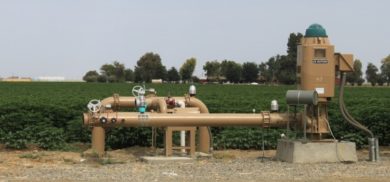
THIS JUST IN … DWR Releases Second Round of Assessments of Groundwater Sustainability Plans
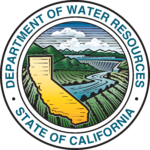 From the Department of Water Resources:
From the Department of Water Resources:
The California Department of Water Resources (DWR) today released its second round of assessments of groundwater sustainability plans developed by local agencies to meet the requirements of the Sustainable Groundwater Management Act (SGMA). The first round of assessments was announced in June.
DWR has assessed and approved plans for the Oxnard Subbasin and the Pleasant Valley Basin in Ventura County, and the North and South Yuba subbasins in Yuba County. These four plans were approved with recommended corrective actions the groundwater sustainability agencies (GSAs) will need to address in their next updated plan due by January 2025. The GSAs for these basins will continue implementing their plans to achieve SGMA’s goal of groundwater sustainability within 20 years.
DWR has notified GSAs in the Eastern San Joaquin Subbasin in San Joaquin County, the Chowchilla and Merced subbasins in Merced and Madera counties, and the Westside Subbasin in Fresno County that their plans lack specific details and will need to address deficiencies to be approved. Prior to making a final determination, DWR is requesting a consultation meeting with the GSAs to discuss actions and time necessary to improve the plans.
The four basins must address a number of deficiencies including the effect of chronic lowering of groundwater levels and land subsidence conditions on groundwater users. The GSAs will need to further analyze drinking water impacts, including the development of projects and actions. Additionally, they will be required to thoroughly understand and avoid or minimize subsidence impacts on flood control and water conveyance infrastructure, as intended by the law.
“In light of the historic and variable climate conditions we are experiencing, these decisions reinforce that managing our water resources in an adaptive and inclusive way is how groundwater sustainability will be achieved,” said DWR Director Karla Nemeth. “We appreciate and support the role of local leaders in shaping how their communities manage the change that comes from creating sustainable groundwater supplies. DWR is committed to providing additional drinking water guidance for the local groundwater agencies to make public health and safety a top priority.”
SGMA initiated a new era of local groundwater management. For the first time in California’s water history, local agencies and groundwater users are required to form GSAs and develop and implement plans to guide how they will achieve groundwater basin sustainability goals over the next 20 years.
SGMA lays out a process for continuous improvement – gathering information to fill data gaps, updating plans, and promoting science-based adaptation. Plans will be updated as new information becomes available and as conditions change in groundwater basins. DWR will review annual reports and assess each plan every five years to determine if the GSAs are on track to meet their basins’ goal.
Despite the long-term timeline, SGMA requires near-term actions that will help the state manage water resources during dry and drought years. For example, GSAs have been required to submit annual progress reports since 2020 with the most up-to-date monitoring and plan implementation information for their groundwater basins, including groundwater levels and use. This data can be accessed on the SGMA Portal.
By tracking conditions and implementation performance, the state and local agencies can better manage water resources during average and wet years to ensure groundwater will be available as a buffer during dry years.
In addition to and aligned with plan evaluation, DWR continues to support GSAs by providing planning, technical, and financial assistance. In April, DWR announced $26 million in grant funding for project investments to improve water supply security, water quality and the reliability of groundwater. Last month, DWR also released draft guidelines for public comment on planning and implementation of an additional $300 million for SGMA implementation.
These efforts align with the Newsom Administration’s goal to provide significant additional funding for projects to improve groundwater conditions and advance safe drinking water efforts for groundwater-dependent communities identified in the Governor’s Water Resilience Portfolio.
For more information about DWR’s available assistance, watch this video and visit the assistance and engagement webpage.
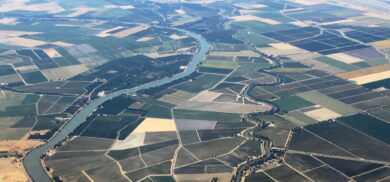
PPIC: Creating Collaborative Recharge Partnerships in the San Joaquin Valley
Bringing the San Joaquin Valley’s groundwater basins into balance by the early 2040s is going to be challenging, but two neighboring groundwater sustainability agencies (GSAs) in Madera County are collaborating to move the process forward.
The PPIC spoke with one engineering consultant and one general manager—Joe Hopkins of Aliso Water District Groundwater Sustainability Agency and Sarah Woolf of the Triangle T Water District—to hear about their agencies’ efforts to comply with the 2014 Sustainable Groundwater Management Act (SGMA).

PPIC: Improving California’s Water Market
How Water Trading and Banking Can Support Groundwater Management
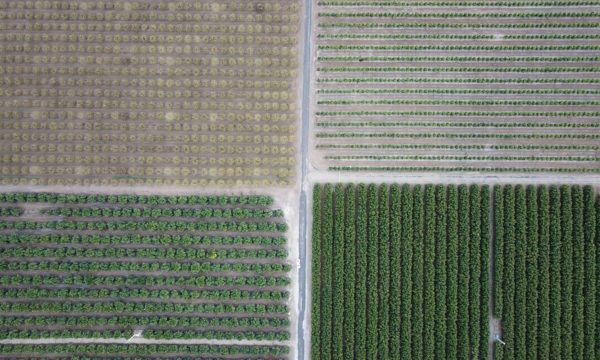 The Sustainable Groundwater Management Act mandates that local groundwater users bring their groundwater basins into balance by the 2040s, a process that will ultimately help individual users and their communities build resilience in an era of climate change.
The Sustainable Groundwater Management Act mandates that local groundwater users bring their groundwater basins into balance by the 2040s, a process that will ultimately help individual users and their communities build resilience in an era of climate change.
As groundwater sustainability agencies and others face a future of pumping reductions and subsequent land fallowing, water banking and water trading may prove important tools to help manage this transition.
However, a combination of aging infrastructure and complex, conflicting regulatory structures currently hinders the expansion of banking and trading. Multiple actors can drive reforms to streamline these practices.

CA WATER COMMISSION: Advancing Well-Designed Water Trading Programs in California
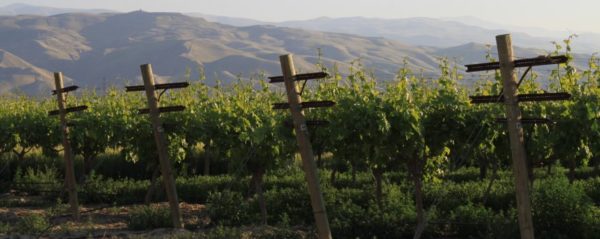 In March of this year, the Secretaries of the Natural Resources Agency, Environmental Protection Agency, and Department of Food and Ag tasked the California Water Commission with initiating a thorough and inclusive public dialogue to frame state considerations around shaping well-managed groundwater trading programs.
In March of this year, the Secretaries of the Natural Resources Agency, Environmental Protection Agency, and Department of Food and Ag tasked the California Water Commission with initiating a thorough and inclusive public dialogue to frame state considerations around shaping well-managed groundwater trading programs.
At the June meeting of the California Water Commission, the commissioners heard from a panel of speakers who discussed why groundwater sustainability agencies (or GSAs) might consider markets, what groundwater trading entails, its opportunities and limitations, and how it is connected to water accounting, allocations, and sustainable groundwater management.
The first panelist was Dr. Newsha Ajami, the Director of Urban Water Policy with Stanford University’s Water in the West and an appointed member of the San Francisco Public Utilities Commission who gave a presentation on using a cap and trade scheme to diversify water supplies. You can read her presentation here: Dr. Newsha Ajami: Enhancing Regional Water Sustainability through Virtual Water Trading
Next, Steven Springhorn, the Acting Deputy Director of Statewide Groundwater Management at the Department of Water Resources, highlighted how the Sustainable Groundwater Management Act and related activities provide a framework and foundation to build off of to develop efficient and equitable markets and how those markets can help to collectively and successfully implement SGMA. He also discussed the assistance available from the Department for SGMA implementation that can facilitate local agencies working towards developing allocations and markets. You can read his presentation here: STEVEN SPRINGHORN: Water Trading & the Sustainable Groundwater Management Act
The third presenter was Dr. Christina Babbitt, the senior manager of the Environmental Defense Fund’s California Groundwater Program. Her presentation focused on advancing well-designed water trading programs in California and included an example of EDF’s work with partners to develop a groundwater trading platform. You can read her presentation here: DR. CHRISTINA BABBITT: Advancing Well-Designed Water Trading Programs in California

PPIC FACT SHEET: Groundwater Recharge
Groundwater recharge is an important water management practice in California.
- Recharge occurs when water seeps into the ground to replenish underground aquifers. Although some recharge happens incidentally—water flowing into the ground from rivers, unlined canals, or excess irrigation—intentional recharge can restore groundwater levels and store water for later use.
- In coastal areas, intentional recharge prevents salty ocean water from entering freshwater aquifers. Recharge can also help prevent impacts from groundwater pumping, such as dry wells or sinking lands, while providing wetland habitat for birds, reducing flood risk, and storing water for droughts.
- Active recharge is a longstanding practice in much of urban Southern California and parts of the Bay Area, Central Coast, and Central Valley.
Click here for the fact sheet in English from PPIC. Haga clic aquí para ver la hoja informativa en español de PPIC.

Q/A – Paul Gosselin, Deputy Director of Sustainable Groundwater Management
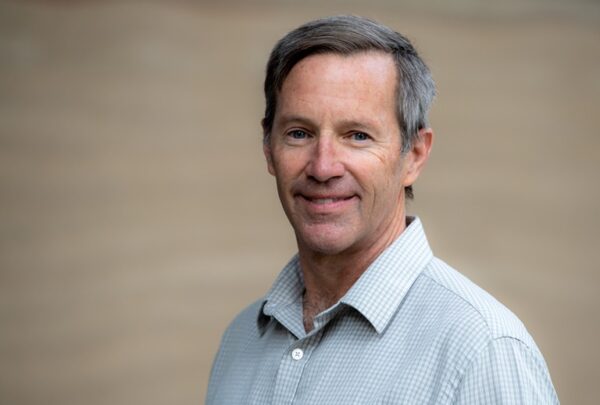 Below is an interview with DWR’s newly appointed Deputy Director of Sustainable Groundwater Management Paul Gosselin. Paul is a long-time water industry professional in California who will now lead the Department’s SGMO Office in implementing the State’s historic Sustainable Groundwater Management Act (SGMA).
Below is an interview with DWR’s newly appointed Deputy Director of Sustainable Groundwater Management Paul Gosselin. Paul is a long-time water industry professional in California who will now lead the Department’s SGMO Office in implementing the State’s historic Sustainable Groundwater Management Act (SGMA).
What is your role with DWR and what excites you about the position?
The people and problem solving are two of the main things that excite me about working at the California Department of Water Resources (DWR). I joined DWR in July of 2021 as Deputy Director of Sustainable Groundwater Management.
A critical part of my position is overseeing the Department’s review of local groundwater sustainability plans as part of the Sustainable Groundwater Management Act (SGMA). The effort to advance local programs to sustain groundwater resources is among one of the most important decisions facing California today.

SGMA in the news
Dry wells, drastic cutbacks. For many Californians, drought hardships have already arrived
“Staci Buttermore turned a faucet on the morning of May 28. She got nothing more than a stuttering sound, a staccato burp of air. Her well, 95 feet deep, had gone dry. For 24 years she and her husband had lived on a small ranch in Glenn County without a hint of water problems. Her husband’s family had lived there for a quarter-century before that, and every time the faucet was turned on, the water gushed out. Suddenly, they had become the latest victims of California’s drought. … ” Read more from the Sacramento Bee here: Dry wells, drastic cutbacks. For many Californians, drought hardships have already arrived
Public meetings planned to discuss Colusa Subbasin
 “The Colusa Groundwater Authority (CGA) and the Glenn Groundwater Authority (GGA) will host two public meetings to discuss the Public Draft Colusa Subbasin Groundwater Sustainability Plan (GSP) next week. “We’re at the culmination of a long process and on the cusp of implementing projects that will better monitor and enhance our groundwater,” said Denise Carter, GCA board chair and Colusa County Supervisor. “These meetings and the public comment period are a critical opportunity for stakeholders to give their input to the CGA and GGA before we approve the GSP and submit it to the state. I encourage every affected groundwater user in the subbasin to attend one of these meetings, review the plan and give us your feedback.” … ” Continue reading at Yahoo News here: Public meetings planned to discuss Colusa Subbasin
“The Colusa Groundwater Authority (CGA) and the Glenn Groundwater Authority (GGA) will host two public meetings to discuss the Public Draft Colusa Subbasin Groundwater Sustainability Plan (GSP) next week. “We’re at the culmination of a long process and on the cusp of implementing projects that will better monitor and enhance our groundwater,” said Denise Carter, GCA board chair and Colusa County Supervisor. “These meetings and the public comment period are a critical opportunity for stakeholders to give their input to the CGA and GGA before we approve the GSP and submit it to the state. I encourage every affected groundwater user in the subbasin to attend one of these meetings, review the plan and give us your feedback.” … ” Continue reading at Yahoo News here: Public meetings planned to discuss Colusa Subbasin
 Butte County supervisors back new water district
Butte County supervisors back new water district
“After a lengthy public hearing Tuesday, the Butte County Board of Supervisors voted 3-1 to support a proposed water district in the northwest county. The Tuscan Water District would cover 102,000 acres stretching from Butte Valley, north and west to the Tehama and Glenn county lines, excluding Cal Water’s Chico Division. The district name refers to the aquifer beneath the area. The area is almost entirely dependent on groundwater, and to meet the provisions of a recent state law, the amount that is pumped will have to be reduced. A group of farmers proposed the Tuscan District to import surface water so less groundwater will have to be pumped. That’s because if conservation and other measures don’t achieve enough of a reduction in pumping, farmland will have to be fallowed. ... ” Read more from the Chico Enterprise-Record here: Butte County supervisors back new water district
Sonoma County: Release of final draft groundwater sustainability plans and opportunity to comment at upcoming community meetings
“Sonoma County’s three groundwater sustainability agencies, Petaluma Valley, Sonoma Valley and Santa Rosa Plain, are releasing the Final Draft Groundwater Sustainability Plans (GSPs) on October 1. The GSPs assess the conditions of the groundwater basin, analyze the basin’s sustainability over a 50-year period, and identify projects and actions needed to ensure the basin is sustainable by 2042. … ” Read more from Sonoma County here: Sonoma County: Release of final draft groundwater sustainability plans and opportunity to comment at upcoming community meetings
Owens Valley Groundwater Authority requests public input
 “The Sustainable Groundwater Management Act (SGMA) of 2014 empowers local agencies to ensure groundwater resources are managed sustainably. The Owens Valley Groundwater Authority (OVGA) was created to develop a Groundwater Sustainability Plans (GSP) for the Owens Valley Groundwater Basin which includes the Owens, Round, Chalfant, Hammil, and Benton Valleys as well as Fish Slough and the area around Owens Lake. The OVGA is a joint powers authority composed of Inyo County, Mono County, City of Bishop, Indian CreekWestridge Community Service District (CSD), and Big Pine CSD as well as two interested parties, the Lone Pine Paiute Shoshone Tribe and the Owens Valley Committee. Even though the Basin is not in a critically over-drafted condition and was ranked by the California Department of Water Resources as a low priority basin, the OVGA elected to develop a GSP voluntarily over the last year. … ” Continue reading from the Sierra Wave here: Owens Valley Groundwater Authority requests public input
“The Sustainable Groundwater Management Act (SGMA) of 2014 empowers local agencies to ensure groundwater resources are managed sustainably. The Owens Valley Groundwater Authority (OVGA) was created to develop a Groundwater Sustainability Plans (GSP) for the Owens Valley Groundwater Basin which includes the Owens, Round, Chalfant, Hammil, and Benton Valleys as well as Fish Slough and the area around Owens Lake. The OVGA is a joint powers authority composed of Inyo County, Mono County, City of Bishop, Indian CreekWestridge Community Service District (CSD), and Big Pine CSD as well as two interested parties, the Lone Pine Paiute Shoshone Tribe and the Owens Valley Committee. Even though the Basin is not in a critically over-drafted condition and was ranked by the California Department of Water Resources as a low priority basin, the OVGA elected to develop a GSP voluntarily over the last year. … ” Continue reading from the Sierra Wave here: Owens Valley Groundwater Authority requests public input
Video: Groundwater and Urban Growth in the San Joaquin Valley
 “The San Joaquin Valley is home to some 4 million residents and growing rapidly: another 1 million residents are expected by 2040. Groundwater is the primary water source for these communities, yet decades of overpumping have stressed the region’s groundwater basins, resulting in land subsidence, dry wells, and falling groundwater reserves. The 2014 Sustainable Groundwater Management Act (SGMA) seeks to solve this issue by mandating that water users bring their groundwater basins back into balance by the 2040s. “Much of the discussion around implementation of the Sustainable Groundwater Management Act in the valley focuses on agriculture,” said PPIC research fellow Andrew Ayres at a virtual event last week. “That makes sense, because agriculture is a key player in SGMA implementation in the valley. Urban areas, though they use much less water, oftentimes are highly reliant on groundwater, so SGMA implementation is very important for them as well.” … ” Read more from the PPIC here: Video: Groundwater and Urban Growth in the San Joaquin Valley
“The San Joaquin Valley is home to some 4 million residents and growing rapidly: another 1 million residents are expected by 2040. Groundwater is the primary water source for these communities, yet decades of overpumping have stressed the region’s groundwater basins, resulting in land subsidence, dry wells, and falling groundwater reserves. The 2014 Sustainable Groundwater Management Act (SGMA) seeks to solve this issue by mandating that water users bring their groundwater basins back into balance by the 2040s. “Much of the discussion around implementation of the Sustainable Groundwater Management Act in the valley focuses on agriculture,” said PPIC research fellow Andrew Ayres at a virtual event last week. “That makes sense, because agriculture is a key player in SGMA implementation in the valley. Urban areas, though they use much less water, oftentimes are highly reliant on groundwater, so SGMA implementation is very important for them as well.” … ” Read more from the PPIC here: Video: Groundwater and Urban Growth in the San Joaquin Valley
Retired farmer warns of huge water problem
“For many years. retired farmer Tom Willey of T&D Willey Organic Farms, pumped water onto his 75 acres of farmland in Madera County. During his 20 years of farming, Willey didn’t think of much other than growing his crops and living off the land. However, now he realized he was part of the problem and, if something isn’t done, the entire Central Valley could be in for a rude awakening when it comes to water issues. “A couple of weeks ago, I ran into my friend, Matt Angell, who owns Madera Pumps,” Willey said. “He basically goes around and services a bunch of agriculture wells. He has been running cameras down people’s wells at a rate of about three a day. People have been calling him frantically of what is going on with their pump with no water or water quality bad. … ” Continue reading at the Madera Tribune here: Retired farmer warns of huge water problem
Water is scarce in California. But farmers have found ways to store it underground
“Aaron Fukuda admits that the 15-acre sunken field behind his office doesn’t look like much. It’s basically a big, wide hole in the ground behind the headquarters of the Tulare Irrigation District, in the southern part of California’s fertile Central Valley. But “for a water resources nerd like myself, it’s a sexy, sexy piece of infrastructure,” says Fukuda, the district’s general manager. This earthen basin could be the key to survival for an agricultural community that delivers huge quantities of vegetables, fruit and nuts to the rest of the country — but is running short of water. The basin just needs California’s rivers to rise and flood it. ... ” Read more from the Capital Public Radio here: Water is scarce in California. But farmers have found ways to store it underground
Indio Subbasin Water Management Plan Update is available for public review and comment
“The draft 2021 Indio Subbasin Water Management Plan Update is now available for public review and comment. The Indio Subbasin, which is where most local drinking water comes from, is part of the Coachella Valley Groundwater Basin. The update outlines how local water managers plan to meet future water demands, maintain stable groundwater levels, manage and protect water quality, collaborate with tribes and state and federal agencies on shared objectives, manage future costs, minimize adverse environmental impacts, and reduce vulnerability to climate change and drought impacts. ... ” Continue reading from the Coachella Valley Water District here: Indio Subbasin Water Management Plan Update is available for public review and comment

DWR’S SGMO NEWSLETTER: AEM surveys, Draft Drinking Water Well Principles and Strategies Document, A week of webinars on SGMA efforts, and more …
 From the Department of Water Resources Sustainable Groundwater Management Office:
From the Department of Water Resources Sustainable Groundwater Management Office:
NEW First Airborne Electromagnetic (AEM) Surveys Complete and Additional Surveys Scheduled
AEM data were successfully collected in the Salinas Valley, Paso Robles, and Cuyama Valley in early August. Data are expected to become publicly available in early 2022.
Additional AEM surveys have been scheduled to begin this fall in three areas of the state. The three areas include:
- Northern Area: Scott River Valley, Shasta Valley, Butte Valley, Tulelake, Big Valley (Lassen and Modoc counties), and a portion of Fall River Valley.
- North-Central Area: Ukiah Valley, Big Valley (Lake County), Santa Rosa Plain, Petaluma Valley, and Sonoma Valley
- Southern San Joaquin Valley Area: White Wolf, Kern County, Tulare Lake, Tule, and Kaweah.
Visit the AEM Survey Schedule webpage for schedule updates. For more information, visit the Statewide AEM Survey Project webpage or email AEM@water.ca.gov.
NEW State Seeks Public Comment on Draft Drinking Water Well Principles and Strategies Document
Governor Gavin Newsom signed the April 21, 2021 State of Emergency Proclamation after two dry years to prioritize the protection of public health, safety and the environment, and to prepare for and mitigate the effects of drought conditions. Executive Action Item 11 specifically identifies:
“To ensure the potential impacts of drought on communities are anticipated and proactively addressed, the Department of Water Resources, in coordination with the Water Board, shall develop groundwater management principles and strategies to monitor, analyze, and minimize impacts to drinking water wells.”
As was announced on September 9, 2021, the Draft Groundwater Management and Drinking Water Well Principles and Strategies are available for public review during the 30-day public comment period. The Draft Principles and Strategies are also available in Spanish. Public comments are due no later than Thursday, October 7, 2021 by 5:00 PM PDT. You can submit a public comment by the deadline or ask us questions anytime by sending an email to sgmps@water.ca.gov. We look forward to hearing from you.
The state also held a public webinar to review the draft principles and strategies and accept formal public comments on September 23, 2021. Materials from previous public workshops and sessions, a schedule on the next steps, and more information for this effort are available on our Drinking Water Wells Principle website. If you have comments or questions, please email us at sgmps@water.ca.gov.
NEW A Week of Webinars on Statewide Groundwater Management Efforts
 The California Department of Water Resources (DWR) is hosting a week of webinars on statewide groundwater management efforts. More information about each webinar is included in the flyer to the right.
The California Department of Water Resources (DWR) is hosting a week of webinars on statewide groundwater management efforts. More information about each webinar is included in the flyer to the right.
- 2022 Groundwater Sustainability Plan (GSP) Submittal Workshop, Monday, October 18, 2021 from 10AM to 12:30PM, Click Here to Register
- 2022 Alternative 5-year Update Submittal Workshop, Tuesday, October 19, 2021 from 10AM to 12:00PM, Click Here to Register
- Resources for Sustainable Groundwater Management Act (SGMA) Implementation, Wednesday, October 20, 2021 from 10AM to 11:30AM, Click Here to Register
- Accessing Groundwater Data and Tools, Thursday, October 21, 2021 at 10AM to 12:00PM, Click Here to Register
For questions about these webinar events, please contact us at: sgmps@water.ca.gov.
REMINDER Submit or Update Your Groundwater Sustainability Plans (GSP) Initial Notification
The 2022 deadline for GSPs is nearing; if your GSP development has undergone some changes since your Initial Notification submission, please make sure visit the SGMA Portal – GSP Initial Notification System and ensure that initial notification is up-to-date . When logged in, the portal allows edits to be made to previously submitted Initial Notifications, including the ability to withdraw a submittal.
If you have not submitted an Initial Notification, remember that before starting a GSP, agencies are required to notify DWR in writing using the SGMA Portal – GSP Initial Notification System.
For more information, contact the regional coordinators in DWR’s four Region Offices. For assistance with the system, email Monica.Reis@water.ca.gov.
REMINDER June 2021 GSP Assessments Release and Live Q&A Webinar Materials
DWR evaluates GSPs to determine if they comply with the SGMA, substantially comply with the GSP Regulations, and whether implementation of the GSP is likely to achieve the sustainability goal for the basin. DWR evaluates GSPs within two years of their submittal and issues a written assessment. See the GSP Evaluation fact sheet for more information on GSP assessment outcomes.
DWR released its first assessments of GSPs developed by local agencies to meet the requirements of SGMA on June 3, 2021. DWR has completed its assessment and approved plans for the Santa Cruz Mid-County Basin in Santa Cruz County and 180/400 Foot Aquifer Subbasin in Monterey County. The groundwater sustainability agencies (GSAs) for these critically over-drafted basins will continue implementing their plans to achieve SGMA’s goal of groundwater sustainability within 20 years.
DWR hosted a live question and answer webinar on June 24, 2021. Materials from this public workshop and more information about GSPs and GSP Evaluation are available on our Groundwater Sustainability Plans website. If you have comments or questions, please email us at sgmps@water.ca.gov.
REMINDER Household Water Supply Shortage Reporting System Website Updates
Individuals served by domestic wells who are experiencing a water supply shortage are encouraged to report it to DWR’s online Household Water Supply Shortage Reporting System. This information will help inform state and local agencies on water shortage impacts to households served by wells, and will help identify the need for local, state, or federal assistance.
To report a water supply shortage, go to the MyDryWell webpage, and click the “Submit Report” button. The form is also available in Spanish by clicking “Enviar Reporte.” The site has been updated with additional Helpful Resources for Homeowners, which can be found at the conclusion of submitting a report or by clicking the “Resources” button on the homepage.
For more information, email sgmps@water.ca.gov.
REMINDER Draft California’s Groundwater – Update 2020: Webinar Video and Presentation Slides Now Online
DWR held a public webinar meeting to present an overview of the recently released draft California’s Groundwater – Update 2020 (Bulletin-118) on March 30, 2021, and the video of the meeting is now available online in English and with Spanish subtitles.
Presentation slides are also available in English and Spanish.
The final version of California’s Groundwater is expected to be released in fall 2021.
For more information, visit the updated California’s Groundwater webpage or email CalGW@water.ca.gov.
REMINDER DWR Releases Update to Fine-Grid California Central Valley Groundwater-Surface Water Simulation Model
DWR has released an update to the Fine-Grid California Central Valley Groundwater-Surface Water Simulation (C2VSimFG) Model, which can be used by GSAs developing water budgets for their GSPs.
C2VSimFG Version 1.01 utilizes the latest version of the Integrated Water Flow Model software and corrects minor errors in the model files. These updates do not significantly affect the overall model calibration; however, resulting changes to simulated groundwater levels may vary by basin.
For questions or more information, email sgmps@water.ca.gov.
REMINDER Multi-Language Groundwater Educational Videos Now Available
New SGMA groundwater educational videos in various languages are now available. All materials are available for public use and may be shared and added to websites.
“Groundwater: California’s Vital Resource” video: English, Spanish, Punjabi, and Hmong
“DWR’s Assistance Role in Groundwater Management” video: English and Spanish
REMINDER CASGEM to Monitoring Network Module Transition Frequently Asked Questions Available
The CASGEM to Monitoring Network Module Transition Frequently Asked Questions (FAQ) document covers questions related to the Groundwater Monitoring Law, the California Statewide Groundwater Elevation Monitoring (CASGEM) Program, a GSP’s required monitoring, the SGMA Portal’s Monitoring Network Module (MNM), and a basin’s or subbasin’s transition from the CASGEM Online System to the SGMA Portal’s Monitoring Network Module .
For additional information or questions concerning any topics covered in the FAQ, please contact:
- Monitoring Network Module: GSPSubmittal@water.ca.gov
- CASGEM: Thomas.Lutterman@water.ca.gov
- Northern Region: Glen.Gordon@water.ca.gov
- North Central Region: Bill.Brewster@water.ca.gov
- South Central Region: Charles.McKenzie@water.ca.gov
- Southern Region: Abiodun.Aderonmu@water.ca.gov
REMINDER Monitoring Network Module Updated to Accept Sustainable Management Criteria Data
The SGMA Portal’s Monitoring Network Module, the online reporting system for monitoring site data, has been updated to accept sustainable management criteria data for the chronic lowering of groundwater levels sustainability indicator. This data includes minimum thresholds, measurable objectives, and interim milestones. Following the update, GSAs must load the sustainable management criteria data before importing any new groundwater level readings to representative monitoring wells in the Monitoring Network Module.
For more information, view the Sustainable Management Criteria Data Submittal User Guide.
For questions or assistance, email GSPSubmittal@water.ca.gov.
REMINDER Written Translation Services Available
DWR’s written translation service is available to help with communication to non-English speaking constituents. Translation services for materials are available in Chinese, Hmong, Korean, Laotian, Punjabi, Spanish, Tagalog, and Vietnamese. Applicants can submit up to 5,000 words per basin/subbasin.
For details, visit the Written Translation tab on the Assistance and Engagement webpage.
REMINDER Public Meetings Can Be Held Remotely During Pandemic
Governor Newsom’s Executive Order N-25-20 encourages elected officials to conduct public meetings by teleconference or other electronic venue during the pandemic. The order temporarily waives requirements in the Bagley-Keene Act and Brown Act as long as specific requirements are met. The order applies to GSAs and others involved in the implementation of SGMA.
In response to the sustainable groundwater management community’s interest in guidance, resources, and examples on how to conduct public meetings during the COVID-19 pandemic, DWR developed Tips and Tactics for Online Meetings.
REMINDER Groundwater Exchange Shares Information and Resources
Maven’s Notebook’s Groundwater Exchange is a central, collaborative, and publicly accessible online resource center connecting water managers, water users, and community members with tools and resources to support the development and implementation of GSPs. While not a DWR website, DWR representatives have been on the Exchange’s Advisory Board since its inception as it supports the sharing of information and resources for SGMA implementation.
Connect with Your Basin Point of Contact
DWR has designated basin points of contact to assist local agencies as they develop and implement their plans and to assist with applications for Technical Support Services and Facilitation Support Services.
For regional inquiries, contact sgmp_rc@water.ca.gov.
For general inquiries, contact sgmps@water.ca.gov.

